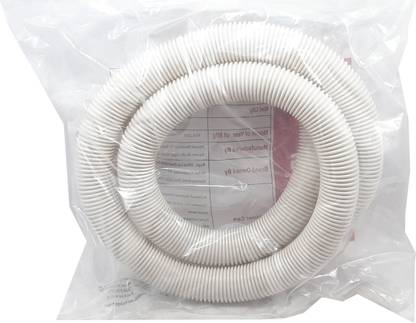There are many reasons you should consider buying the latest washing machine or upgrading from an older model. It’ll clean your clothes more effectively and make them more efficient. Also, there’s the prospect of shorter cycles which means less time spent running around searching for the things that must be done while trying not to forget anything important at home , like children sporting events. A few TV ads go further , suggesting that certain brands will make people happy when they do their laundry but this is contingent on the individual preference of the user and the features particular models offer However, the reality is that these machines work best when installed correctly.
Connectors to Drain of Washing Machine Hose
There are two ways to connect your washing machine drain hose. In order to dispose of wastewater there are two choices: one is to put in a vertical pipe and the other is to place it on an open sink.
1. Slop Sink Connection
There are various methods to drain your washing machine but the slop sink is just one of the options you need to be thinking about. This type of installation poses many risks and potential problems with it. Not only does it cause water that backs up into its filter due to an air gap in between the points where the pipes connect at some point in the course of use and also due to the fact that any force applied by the spin cycle could potentially end up damaging something important inside the device if there isn’t enough space beneath the deck on those retrieve models or create pressure waves that reverberate through potentially dangerous plumbing components until everything breaks permanently.

2. A Drain Pipe Dedicated to Drain Pipe
You might want to look at a separate connection to your washing machine drain pipe. Dedicated pipes are usually larger than those used for kitchen sinks and are able to handle the amount of water which is usually drained from their drains without becoming blocked or loosened as they would be if you connect them directly beneath the place we use our dishwasher! They are also found at higher elevations. This means that there is less risk involved with using this type versus integrating both types into one line running indoors as opposed to out via the open windows (or door).
3. Washing Machine Drain Hose Maintenance
The connections to the hose can be a little complicated and messy, but once you have it set in a proper way, your house will be more tidy for a longer time! Make sure not to forget about cleaning your hose or the attachments in a snap. Put in filters at the two ends of drain pipes, use your own made from old socks or pantyhose if necessary and this should stop lint getting trapped within the pipes, which could result in obstruction due to lack of pressure from water pushing through them as well.
Common Materials for a Washing Machine Drainpipe
1. Stainless Steel Braided Drain Line
The material is not as flexible or rigid as it’s called stainless steel. The material is enclosed in a mesh of plastic coated mesh, that can withstand twists, cuts and bursts with greater strength than any other available material. To show how much care was put into this aspect, some brands will call their items “burst-free”.
2. Rubber Drain Hose
Rubber hoses are a good alternative to more expensive metal or plastic hoses. It has been around for a long time, but with newer models featuring braided polyester mesh or rayon to improve strength; however you’ll require one that is marked as reinforced since it’s under a lot of rough use. These models are ready-made that means you do not need to make them.
For more information, click flexible drain hose for sink